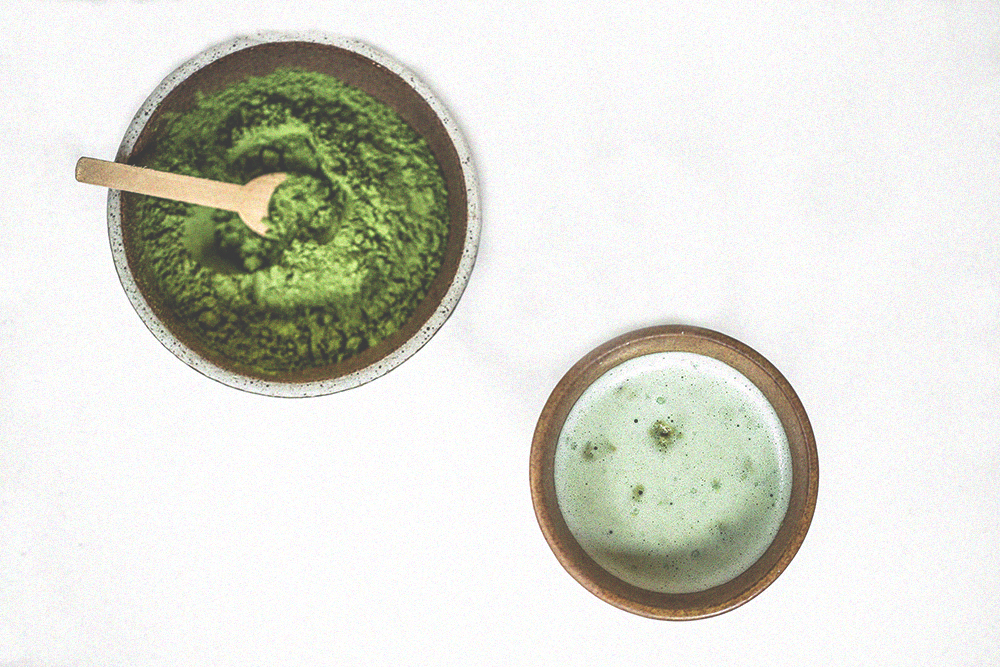In recent years, matcha has become one of the most popular drinks in the tea world. Let’s get to know the difference between matcha and green tea, and what to look for in your next purchase.
BY: KIM DENKHAUS, MS, RD
Widely studied for its medicinal purposes, green tea contains some of the highest concentrations of the catechin, epigallocatechin gallate (EGCG). Catechins belong to the family of flavonoids. Flavonoids are a type of polyphenol with strong antioxidant activities that have been linked to having anti-cancer and anti-inflammatory effects, as well as metabolic and cardiovascular benefits. Research suggests that consuming green tea regularly may boost metabolism, and decrease the risk of heart attack and stroke.
Matcha is a highly concentrated form of green tea. Green tea is comprised of tea leaves picked from the evergreen shrub Camellia sinensis. The leaves are grown in the shade to minimize oxidation, enhance chlorophyll production, increase the presence of the amino acid theanine, and enhances the deep green color in the leaves.
After the leaves are picked, they are dried and ground into a fine powder. Since the entire leaf is used in matcha rather than steeping green tea leaves with water, matcha tea is more concentrated in both caffeine and antioxidants than green tea. In fact, matcha has about 3 times more antioxidants than green tea!
Here are a few tips to drinking your matcha:
Add some lemon
Adding a squeeze of lemon (high in vitamin C) to your green tea or matcha may increase the amount of antioxidants that your body can absorb.
Look at the quality
There are many grades of matcha tea powder, high grade matcha will be more expensive due to the processing cost. Do your homework, just like the supplement industry there are many sub-par companies boasting false advertising claims, so it is best to search for a reputable brand.
Also be sure to watch out for lead contaminants! Lead, which comes from the ground, can be absorbed by the green tea plant. Some tea brands have higher traces of lead than others, meaning there may be concerning levels of lead in your matcha since the whole leaf is consumed.
Consumer Labs, which is an independent 3rd party verification group, can be a helpful resource for determining safe levels of lead in various green tea products. In a recent report published by Consumer Labs, it appears that green tea originating from China tends to carry higher traces of lead, than greens teas originating from Japan.
Watch out for the sugar
Additionally, watch out for added sugar. Many companies are trying take advantage of the matcha trend by selling sugar and matcha blends. This significantly reduces the cost of matcha, and significantly increases the sweet taste. One example is Starbucks Green Tea Latte which is a blend of sugar and ground Japanese Green Tea.
While both matcha and green tea are healthy choices, you may want to stick with green tea if you’re sensitive to caffeine. Additionally, they both have different flavor profiles, so you might prefer the taste of green tea to matcha, or vice versa. Both matcha and green tea are great alternatives to coffee, particularly if you’re sensitive to caffeine or experience acid reflux.
If you are sensitive to caffeine, there are many wonderful herbal tea alternatives, like ginger, lavender or camomile. A daily ritual of tea is a great way to increase water intake and stay hydrated throughout the day.
Happy sipping!
Kim Denkhaus, MS, RD, is a registered dietitian nutritionist in private practice in Los Angeles and San Francisco, California. She has been in the health and wellness industry for over 8 years, and is passionate about helping individuals reconnect with food in a sustainable, healthier way that will help them appreciate where their food comes from and empower them to use use whole foods to fuel and nourish their bodies.

